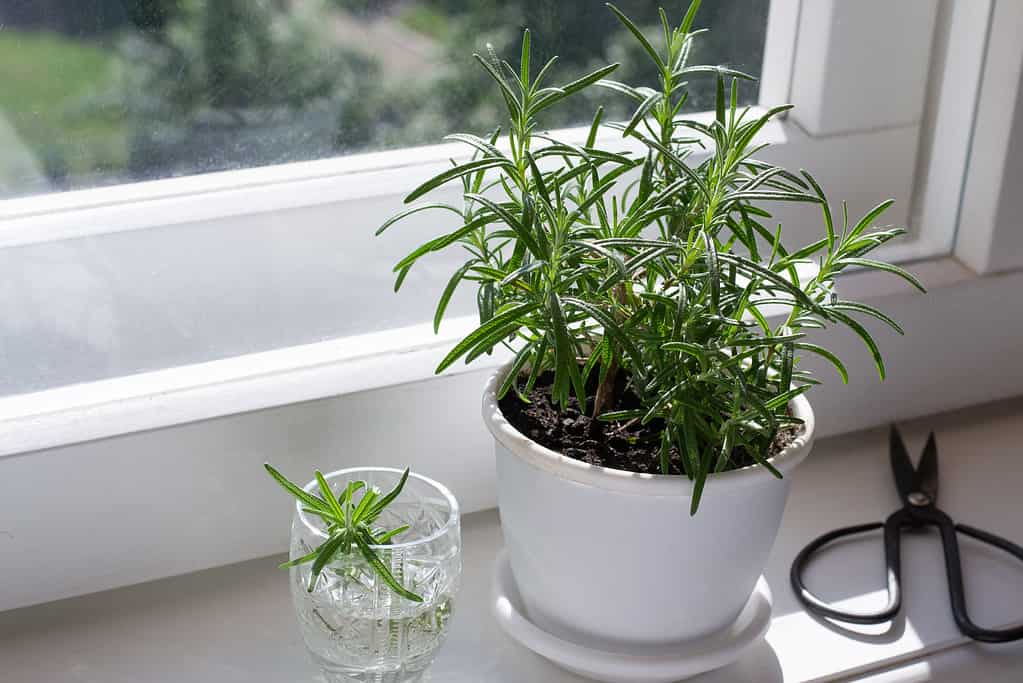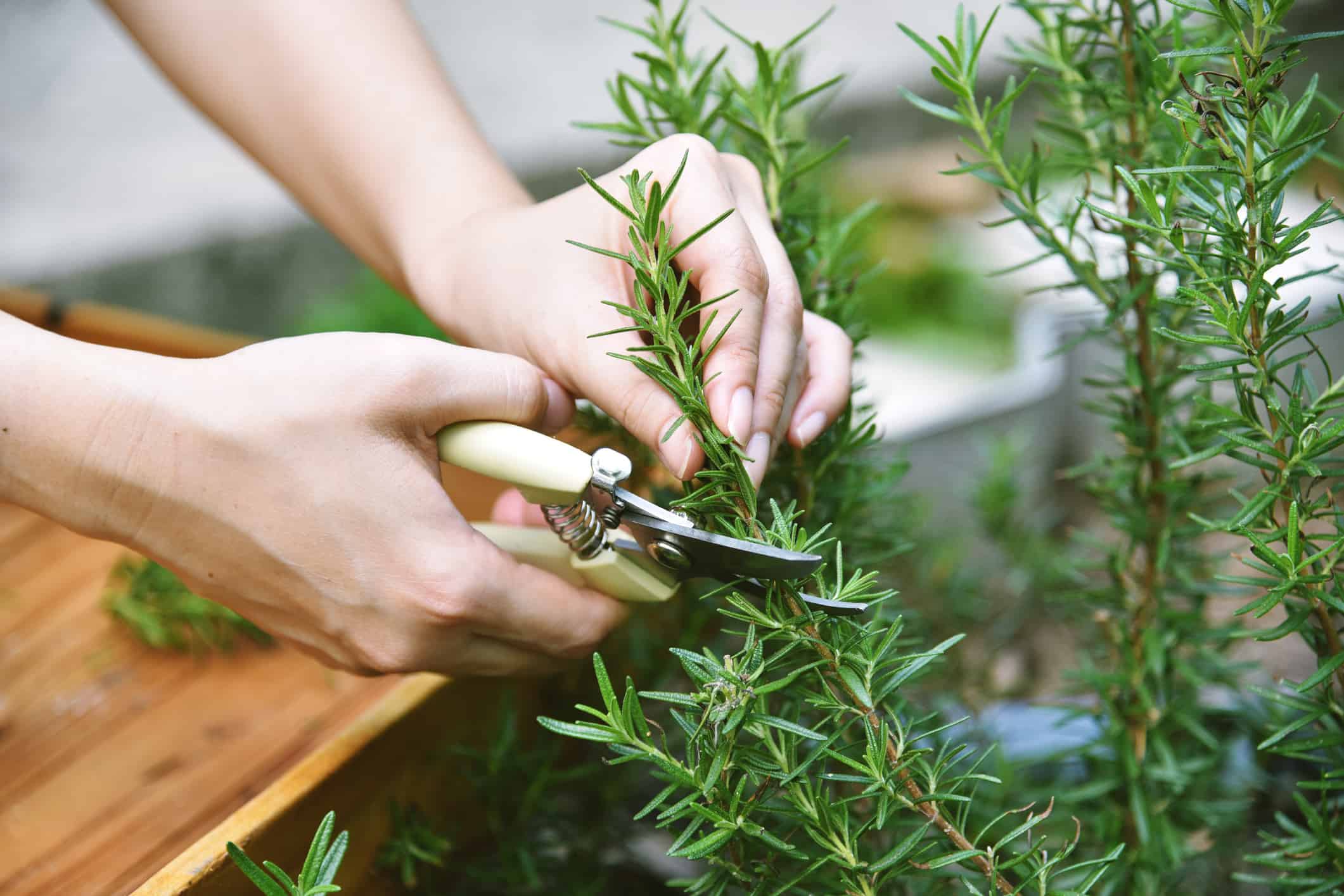Picture this: a miniature tree that exudes the soothing fragrance of rosemary, gracing your living space with its elegance. Rosemary bonsai trees, born from the fusion of horticulture and artistry, offer a unique venture for nature lovers. Crafting these living sculptures involves careful pruning, wiring, and nurturing. In this article, we’ll unveil the secrets behind cultivating and caring for these delightful ornamental treasures.
Quick Information on Rosemary Bonsai Trees
| Rosemary Bonsai Tree Facts | |
|---|---|
| Botanical Name | Rosmarinus officinalis |
| Popular Options | N/A |
| Sunlight | Full sun |
| Soil | Well-draining and acidic |
| Water Needs | High |
| For Beginners? | Yes |
| Indoors or Outdoors? | Both, but preferably indoors |
| Pairs Well With… | Lacquered wood boxes, moss, stones |
Caring For Your Rosemary Bonsai Tree
Cultivating a rosemary bonsai tree is a rewarding endeavor that requires attention and care. As with any plant, providing the right environment, proper watering, suitable sunlight, and essential nutrients are crucial for its well-being.
Choosing the Right Location
Selecting an appropriate location for your rosemary bonsai tree is the first step in its care. Opt for a spot that receives plenty of sunlight. Rosemary thrives in bright, indirect sunlight. Placing your bonsai near a south-facing window or outdoors on a patio that gets sunlight for at least 6 hours a day is ideal. This will help your tree grow strong and maintain its vibrant green color.
Providing Adequate Watering
Proper watering is essential for your rosemary bonsai’s health. Ensure the soil is consistently moist, but not waterlogged. Stick your finger about an inch deep into the soil; if it feels dry, it’s time to water. Use a watering can with a fine nozzle to gently water the soil, allowing water to seep through the drainage holes at the bottom of the pot. Avoid letting the bonsai sit in standing water, as this can lead to root rot.
Maintaining Humidity
Rosemary bonsai trees appreciate a bit of humidity, especially in dry indoor environments. To increase humidity, you can mist the foliage regularly using a spray bottle. Placing a tray filled with water and pebbles near the bonsai can also help maintain a slightly higher humidity level around the tree. However, be cautious not to overdo it, as excessive humidity can lead to fungal issues.
Choosing the Right Pot and Soil
Select a well-draining bonsai pot with proper drainage holes to prevent water accumulation. A mix of well-draining bonsai soil with components like perlite, pine bark, and peat moss works well for rosemary bonsai. This type of soil allows for optimal root aeration and prevents waterlogging, ensuring the health of your tree’s root system.
Fertilizing Your Bonsai
Regular fertilization provides your rosemary bonsai tree with the nutrients it needs to thrive. During the growing season, which typically spans from spring to early autumn, use a balanced liquid fertilizer every two to four weeks. Dilute the fertilizer to half the recommended strength to avoid overfeeding, which can harm the tree. Reduce or stop fertilization during the dormant winter months.

Rosemary can grow quite wild on its own, so proper care and pruning are necessary for keeping them bonsai-sized.
©Maren Winter/Shutterstock.com
Pruning Your Rosemary Bonsai Tree
Pruning is a vital skill for nurturing a healthy and attractive rosemary bonsai tree. Proper pruning not only enhances the tree’s shape and structure but also promotes its overall growth and vigor.
Understanding the Why and When of Pruning
Pruning serves various purposes in bonsai care. It helps maintain the tree’s desired shape, prevents overcrowding of branches, encourages new growth, and improves air circulation. As for timing, the best period to prune your rosemary bonsai is during the active growing season, typically in spring or even early summer. Avoid heavy pruning during colder months, as it might stress the tree.
Gathering the Right Tools
Equipping yourself with the proper tools is a crucial first step in successful pruning. You’ll need sharp bonsai shears or scissors, a pair of pruning scissors for finer work, and concave branch cutters for larger branches. Ensure your tools are clean and well-maintained to make precise cuts that promote quick healing.
Identifying the Branches to Prune
Begin by inspecting your rosemary bonsai branches and identifying those that need pruning. Look for branches that have grown too long, are crossing each other, or are growing inward, blocking sunlight and airflow. Also, watch for any dead, diseased, or weak branches that could compromise the tree’s health.
Executing Pruning Techniques
- Pinching – For young shoots or tips that need shaping, gently pinch them between your fingers. This encourages branching and creates a denser canopy.
- Selective Pruning:- Using your bonsai shears, selectively trim back branches to the desired length. Focus on maintaining the tree’s desired shape while removing excess growth.
- Thinning – To improve air circulation and allow sunlight to penetrate the inner foliage, thin out the denser areas of the tree by removing small, unnecessary branches.
- Cleaning the Trunk – Clear the trunk of the bonsai from any new growth or small branches that might detract from the tree’s overall appearance.
- Cutting Back Larger Branches – When dealing with thicker branches, use concave branch cutters to create clean, flush cuts. This encourages proper healing and prevents unsightly scars.
Making Pruning Cuts
Ensure your cuts are clean and precise to minimize damage to the tree. When making cuts, use a technique called “back cutting.” This involves making an initial cut on the underside of the branch, a short distance from the trunk. This prevents the bark from tearing when you make the final cut from above, near the branch collar. The branch collar is the slightly raised area where the branch meets the trunk.
After-Pruning Care
After pruning, it’s essential to give your rosemary bonsai proper aftercare. Water the tree appropriately to maintain moisture balance. Consider applying a wound sealant to larger cuts to protect against infections. Place the bonsai in a location with appropriate sunlight to aid in healing and new growth.
Pruning your rosemary bonsai tree is an art that requires patience and precision. By understanding the reasons for pruning, choosing the right tools, identifying branches to prune, and executing proper techniques, you can help your bonsai thrive and showcase its natural beauty.

Proper pruning will make your rosemary bonsai look much more clean and elegant.
©Albina Yalunina/iStock via Getty Images
Propagating Your Rosemary Bonsai Tree
Propagating a rosemary bonsai tree is an exciting and rewarding way to expand your collection or share the beauty of bonsai with others. With the right techniques, you can create new bonsai trees from your existing rosemary plant.
Understanding Propagation and Timing
Propagation involves growing new plants from existing ones. For rosemary bonsai, stem cuttings are a common and effective method. The best time to take stem cuttings is during the active growing season, typically in spring or early summer. This ensures that the cuttings have enough energy and resources to develop roots successfully.
Gathering the Necessary Materials
Before you begin, ensure you have all the required materials on hand:
- A healthy rosemary bonsai tree
- Clean and sharpened pruning shears
- A quality rooting hormone (this is optional but highly recommended)
- Small pots (we recommend lacquered wood or ceramic)
- Well-draining and organic bonsai soil
- Clear plastic bags or plastic wrap
- Taking Stem Cuttings
Selecting Healthy Branches and Making the Cut
Choose a healthy branch from your rosemary bonsai that is neither too young nor too woody. The ideal stem is about three to four inches long and has several sets of leaves.
Use sharp scissors or pruning shears to make a clean, downward-leaning cut just below a set of leaves. This will be the base of your cutting. Remove the leaves from the bottom one-third to half of the cutting. This will provide space for roots to develop without excess foliage.
Using Rooting Hormone
While not essential, applying a rooting hormone to the cut end of the stem can enhance the chances of successful rooting. Dip the cut end into the rooting hormone, shaking off any excess.
Planting and Rooting the Cuttings
Fill small pots or containers with a well-draining bonsai soil mix. Moisten the soil slightly without making it too soggy. Insert the cut end of the stem cutting into the moistened soil, ensuring it is stable and upright.
Cover the pot with a clear plastic bag or plastic wrap to create a mini greenhouse. This helps maintain humidity and promotes moisture retention for the cutting. Place the pots in a location with bright, indirect sunlight. Keep the temperature consistent and warm, ideally around 70-75 degrees F.
Caring for Developing Cuttings
Check the soil regularly and water when it feels slightly dry to the touch. Avoid overwatering, as excessive moisture can lead to rot. Over the next several weeks, monitor the cuttings for signs of new growth. Once you notice new leaves forming, it’s an indication that roots are developing. When the cuttings have developed a healthy root system, usually after a few months, they can be transplanted into slightly larger pots or bonsai containers.
Common Problems with Rosemary Bonsai Trees
Maintaining the health and beauty of your rosemary bonsai tree requires vigilance against potential threats. Just like any other plant, rosemary bonsai trees can encounter various problems and pests that can compromise their well-being.
Wilting and Yellowing Leaves
If you notice your rosemary bonsai’s leaves wilting or turning yellow, it could be a sign of overwatering, underwatering, or poor drainage. Adjust your watering routine and ensure the pot has proper drainage holes.
Fungal Diseases
Fungi can attack your bonsai, causing leaf spots, powdery mildew, or root rot. To prevent fungal issues, avoid overwatering, improve air circulation, and maintain proper spacing between plants.
Browning Tips
Brown tips on leaves can result from low humidity, excessive fertilization, or exposure to dry air. Increase humidity around the tree and avoid over-fertilization.
Stunted Growth
If your rosemary bonsai isn’t growing as expected, it might be due to poor soil quality, inadequate sunlight, or lack of nutrients. Repot the bonsai with fresh soil and provide it with sufficient sunlight and balanced fertilization.
Pests
Aphids can suck sap from leaves, causing curling and yellowing. Use a strong jet of water to dislodge them or apply insecticidal soap.
Just as well, spider mites create fine webs and suck plant juices, leading to yellowing and stippling on leaves. Regularly mist the foliage to increase humidity and use insecticidal soap or neem oil.
You might also run into issues with whiteflies. Whiteflies are small, white insects that cluster on the undersides of leaves. They excrete a sticky substance that can attract mold. Use insecticidal soap to control their population.
Caring for a rosemary bonsai tree can be an enjoyable and fulfilling experience. By providing the right conditions, such as suitable sunlight, proper watering, humidity control, and appropriate fertilization, you can ensure the health and vitality of your bonsai. Remember that each bonsai is unique, so pay attention to your tree’s specific needs and make adjustments accordingly. With consistent care, your rosemary bonsai can thrive and become a beautiful, miniature representation of nature’s elegance in your living space.
Thank you for reading! Have some feedback for us? Contact the AZ Animals editorial team.








